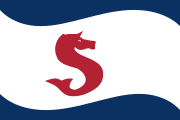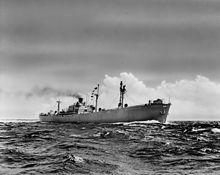 | |
| Industry |
|
|---|---|
| Founded | 1941 |
| Founder | Charles Dant |
| Defunct | 1979 |
| Fate | Bankruptcy 1979 |
| Headquarters | Portland, Oregon - San Francisco |
Key people | Mr. Russell |
States Steamship Company, also called States Line and SSS, was started in 1928 by Charles Dant, in Portland, Oregon and later moved to the headquarters to San Francisco. Dant started the States Steamship Company to take his lumber product to market. He had a fleet of lumber schooners. Dant started by leasing ships from the United States Shipping Board - Emergency Fleet Corporation and founded the Columbia Pacific Steamship Company in 1919, Columbia Pacific Steamship Company routes were between Portland, Far East and Europe. In 1928 Dant merged the Columbia Pacific Steamship Company into the States Steamship Company. The Europe route ended in 1932 and the ship moved to a Philippines route. With the shift to container shipping in the 1960s and Dant's fleet of ships becoming older and obsolete, the company into bankruptcy in 1979. States Line operated four subsidies: Pacific-Atlantic Steamship Company, California Eastern Line founded in 1937 for lumber shipping, Oregon Oriental Line and the Quaker Line. [1] [2]
Contents
- States Steamship Company flag
- States Steamship Company ships
- Quaker Line and California Eastern Line
- Pacific-Atlantic Steamship Company
- Victory ships
- Liberty ships
- Tanker
- Type C1 ship
- See also
- External links
- References
Charles Dant was a major stock holder in the China Import and Export Lumber Company, which had a large sawmill plant in Shanghai.
The Pacific-Atlantic Steamship Company was active with charter shipping with the Maritime Commission and War Shipping Administration for World War II. Pacific-Atlantic Steamship Company also operated charter shipping for the Korea War and Vietnam War.








